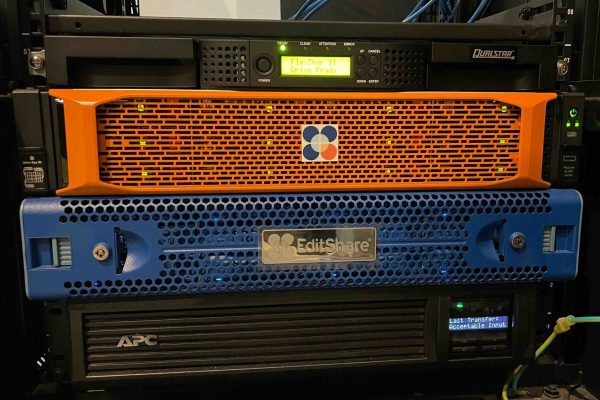“I could never choose another manufacturer for my wireless equipment.”
El Camino: A Breaking Bad Movie premiered globally on Netflix to the delight of Walter White fans everywhere. Production sound mixer Phillip Palmer relied exclusively on Lectrosonics Digital Hybrid Wireless to record almost all of the dialogue and many incidental and ambient sounds that would normally be added in post-production. His lab included three Venue 2 wideband modular receiver systems, eight SMV transmitters for body mics, four HMA plug-on transmitters for boom and plant mics, a couple of older UHs which were used for the ‘voice of God,’ on set, and a couple of LT transmitters for sound department communication.
“Wideband tuning is important given the increasingly crowded spectrum we have to work with these days,” says Palmer, “so the Lectrosonics Venue 2 was an obvious choice. It’s a rackmount chassis that can hold up to six receiver modules, so you can mix and match tuning ranges based on what transmitters and frequency blocks you’re using.”
That wideband capability—and Lectrosonics’ well-known ease when it comes to receiver-transmitter pairing and quick switching of frequencies, would win the day again and again. “People who are used to filming in New York or Los Angeles tell me, ‘It must be great to be out there in the wild west where you have free airwaves,’” he explains. “In fact, there is so much RF in and near Albuquerque. There’s a lot of military, industry, and push-to-transmit sources like walkie-talkies. What might be wide open in the morning can have interference in the afternoon. The frequency agility that Lectrosonics provides has saved my bacon on many occasions!”
It’s Lectrosonics’ long range at a given transmitter output power, and its sound quality, that most impresses Palmer. “That’s the meat and potatoes of the brand, in my opinion. It’s so clean and so dependable. Range is great and all, but if the signal doesn’t sound good, that doesn’t matter. I’m in 100-milliwatt mode most of the time, and on occasion, like for car-to-car stuff, we’ll boost to a quarter-watt. But keeping your wattage lower allows you to stack as many wireless channels as you can in that crowded spectrum. That’s where Lectrosonics has been the champion.”
This flexibility let the team record the majority of dialogue in real time, which is usually ideal for getting the actors’ best performances. “We absolutely were able to minimise the need for ADR because of Lectrosonics. I put a body pack on everyone unless the character wearing minimal clothing precludes it. Having a mic on all actors all the time always reduces the chances that someone’s speech is going to get buried in the environment. It also gives us separate tracks for editorial to work with in the event that actors overlap each other when speaking.”
In fact, this creativity applied to many non-dialogue sounds as well—the kind that most productions would add using computer sound design and Foley. In a frenetic scene where Jesse has broken into once-captor Todd’s apartment to find a stash of cash he knows is hidden there, Palmer describes how “Aaron Paul absolutely rips that set apart. Then it switches to this overhead view of the floor plan, where you see multiple Jesses ransacking multiple rooms at once. Symbolizing his frantic search in this way was a brilliant idea for which [writer and director] Vince Gilligan credits production designer Judy Rhee. That set was totally real—they built it like that, with a wide camera flown 60 feet in the air. Point being, we couldn’t be in the shot, so I had wireless microphones planted everywhere. Post enhanced things somewhat, but most of what you hear was recorded on set. Vince loves the real sounds, and Lectrosonics let us get them all.”
“We did the same thing with vehicles, such as the Chevy El Camino in the title,” Palmer continues. “We were able to get the sounds of all the real cars instead of having to go back and invent them.”
Like the original series, El Camino featured a number of locations in extreme environments. Asked how his equipment fared under those conditions, Palmer beams, “I put this stuff through the wringer. Lectro’s gear has held up so well over the years that when I do retire a piece, it’s by selling it rather than putting it in mothballs. Another element is, their service is phenomenal. In the rare event something does break, I can’t think of a time when they’ve been unable to fix it. I’ve taken things to places, gotten them dirty, gotten them wet, beat them up, and Lectrosonics has always been able to make them perform like new—often much faster than I ever plan for. I could never choose a different manufacturer for my wireless equipment.”
Lectrosonics: www.lectrosonics.com




